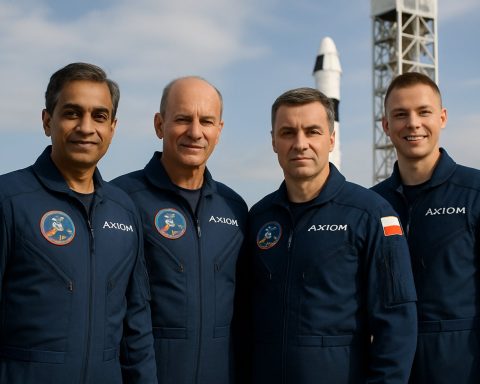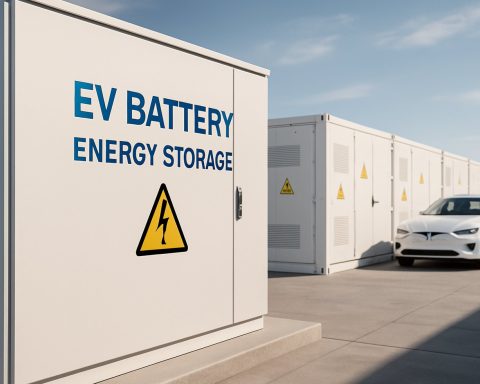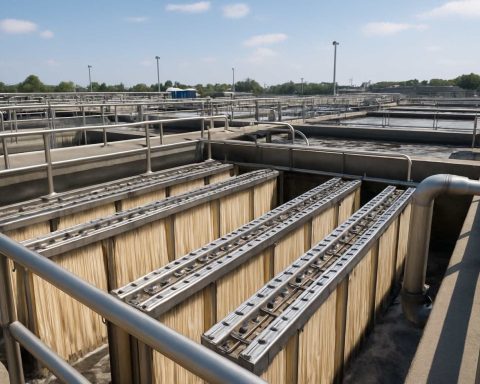- Russia and China plan to build a nuclear power plant on the moon by 2036, marking a significant step in lunar exploration.
- The project involves building the International Lunar Research Station (ILRS) using autonomous technology without human presence.
- Seventeen nations, including Pakistan, Thailand, and South Africa, are collaborating in this ambitious lunar venture.
- The initiative begins with China’s Chang’e-8 mission in 2028 and aims to establish a complex lunar infrastructure by 2035.
- The collaboration between Russia and China poses a challenge to NASA’s Artemis program, which faces delays and budget constraints.
- This new era of space exploration echoes the mid-20th century space race, positioning the moon as a strategic geopolitical frontier.
On the barren plains of the moon’s south pole, a new chapter in space exploration is unfolding—a dramatic shift that echoes both innovation and rivalry. Russia, in a strategic partnership with China, has embarked on an audacious venture to construct a nuclear power plant on the lunar surface by 2036. This daring plan promises not just to alter the contours of lunar research but potentially ignite a new era of celestial competition.
The ambition to build a nuclear reactor to power the International Lunar Research Station (ILRS) marks a significant milestone in the burgeoning cooperation between two global superpowers. This lunar station aims to explore uncharted possibilities for humanity and stretch the bounds of human ingenuity beyond the earthly realm.
According to the memorandum signed by Russia and China, the complex assembly of this reactor will be executed without human presence, relying on the precision of autonomous technology. Yury Borisov, the director general of Roscosmos, revealed that essential technologies are on the brink of readiness and underscored the mission’s commitment to expand beyond immediate utility toward an eventual human presence on our celestial neighbor.
Seventeen nations have already pledged allegiance to this groundbreaking project, including countries like Pakistan, Thailand, and South Africa. Their involvement reflects a shared vision and their stake in the new frontier of space exploration. The groundwork of this immense lunar infrastructure is set to begin with China’s Chang’e-8 mission in 2028, marking the nation’s historic first crewed moon landing.
This collaborative Sino-Russian endeavor has sketched a detailed roadmap, projecting hefty launches between 2030 and 2035 to lay the robotic groundwork for the moon base. The project eventually aspires to forge a fully integrated system connecting a space station in lunar orbit with various nodes across the moon’s surface.
All of this propulsion into space occurs against the backdrop of stiff competition from NASA’s Artemis program, which has faced its own litany of setbacks. Artemis III, now eyeing a 2027 timeline, signifies America’s ambition to return astronauts to the moon for the first time in over half a century. However, future plans to launch a lunar space station named Gateway have been thrown into disarray due to budget cuts.
As China and Russia fortify their grip on space exploration, the celestial rivalry intensifies, nudging NASA and its remarkable legacy towards recalibration. While the moon becomes a stage for ambitious powers and their technological prowess, the broader audience can only watch as a dynamic new space race unfolds, reminiscent of the terrestrial space race during the mid-20th century. The key takeaway? The moon, once just a remote astronomical body, may soon emerge as the strategic fulcrum of global geopolitics in a renewed quest for dominance and discovery.
Moon Power: Inside China’s and Russia’s Race to Build a Nuclear Power Plant on the Moon
Background and Context
Russia and China have embarked on an ambitious collaboration to establish a nuclear power plant on the moon by 2036, aiming to break new ground in space exploration and expand geopolitical influences. The plan involves constructing a nuclear reactor to power the International Lunar Research Station (ILRS). This monumental venture not only signals increased collaboration between the two nations but also marks significant progress in autonomous technologies and extraterrestrial exploration.
Key Details and Insights
Technological Ambitions and Advancements
1. Autonomous Construction: The project’s reliance on autonomous technology underscores advancements in robotics and artificial intelligence, necessary for assembling infrastructure in the harsh lunar environment without human presence. These technologies are expected to improve significantly by the time construction begins in the early 2030s.
2. International Collaboration: The project has won the support of 17 nations, reflecting a global effort to expand human reach into space. Notable participants like Pakistan, Thailand, and South Africa demonstrate the diversity of international interests in space exploration beyond traditional superpowers.
3. Energy Innovations: The move to employ nuclear power on the moon signifies a shift toward sustainable, long-term energy solutions for space missions. Nuclear reactors provide a reliable power source crucial for maintaining a constant energy supply in the absence of sunlight on the moon’s far side.
Challenges and Considerations
1. Logistical Hurdles: Constructing a nuclear reactor on the moon involves unique challenges, including transportation of materials, remote construction in extreme environments, and ensuring safety protocols without direct human intervention.
2. Competition with NASA: The project faces competition from NASA’s Artemis program, which aims to return astronauts to the moon and establish a lunar base with international partnerships. Despite budgetary constraints, NASA’s focus on sustainable space exploration presents formidable competition.
Market Forecasts and Industry Trends
– Space Race Revival: This new phase of lunar exploration mirrors the historical space race, with increased investments in space technologies expected over the next decade.
– Autonomous Tech Growth: The project will likely spur advancements and market growth in autonomous systems and robotics, integral for executing complex operations in remote environments.
Future Prospects
The success of the lunar nuclear power plant could set a precedent for sustainable extraterrestrial colonization and wider human space exploration initiatives. Additionally, it may influence global policies and cooperation models concerning space governance and utilization of celestial bodies.
Actionable Recommendations and Quick Tips
1. Stay Informed on Space Policies: As geopolitical dynamics evolve in space exploration, keeping up with changes in policies will benefit stakeholders involved in these ventures.
2. Invest in STEM Education: Promote education in science, technology, engineering, and mathematics (STEM) fields to prepare the next generation of innovators and explorers who will likely contribute to these rapidly evolving industries.
3. Monitor Technological Developments: Keep an eye on advancements in autonomous technologies and nuclear energy, as they will play critical roles in the future of space exploration.
By following the unfolding developments, stakeholders can position themselves advantageously in what promises to be a transformative period for global space exploration.
For more insights into technological advancements and autonomous systems, visit MIT Technology Review or for detailed developments in space exploration, keep updated with Space.com.











